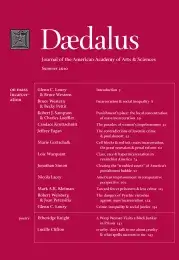The contradictions of juvenile crime & punishment
Juvenile incarceration in the United States is, at first glance, distinctly different from its adult counterpart. While some juvenile facilities retain the iconic aesthetic of adult incarceration1–orange jumpsuits, large cellblocks, uniformed guards, barbed wire, and similar heavy-security measures–others have trappings and atmospherics more reminiscent of boarding schools, therapeutic communities, or small college campuses. These compact, benign settings avoid the physical stigmata of institutional life and accord some autonomy of movement and intimacy in relations with staff. They also give primacy to developmentally appropriate and therapeutic interventions.
However, like its adult counterpart, juvenile corrections, whether located in a human warehouse or a therapeutic community, is designed mainly to control its residents and restrict their personal freedoms. Movement and association are intensively regulated; outside contact with family, friends, and intimate partners is attenuated and used as an incentive for good behavior; access to media and culture is restricted; privacy is nonexistent; and choice of clothing, language, and other modes of personal expression is off-limits. Whatever developmental importance these forms of self-expression and self-determination may have for adolescents, it is sacrificed to the primary goals of security, control, discipline, and punishment. Most important, at either end of the continuum of institutional climate, the options of solitary confinement, physical restraint, or other forms of extreme deprivation exist to control the defiant and unruly or to punish wrongdoing. Accordingly, the naming conventions for these juvenile facilities are deceptive: these are not “training schools” or “centers” or any other kind of school or academy, nor are they “homes.” These are correctional facilities whose primary purpose is to punish.
One would expect such institutions to be reserved for those who are most deserving of punishment or those who pose a nontrivial risk to public safety. But under the enduring doctrine of parens patriae,2 we incarcerate children for a mixed bag of rationales, ones that do not always comport with the punitive dimensions of juvenile incarceration. Parens patriae obligates the court to act beyond the need simply to protect children from the harms of noxious social circumstances or to avail them of developmental and material supports that their families have failed to provide. The doctrine allows–even mandates–juvenile courts to protect children from themselves: from their associations with antisocial peers, from poor decision-making with respect to crime, and from harms to their physical and mental health to which they expose themselves.3 As a result, we incarcerate children because their homes are too dangerous or criminogenic; because they are both delinquent and mentally ill or addicted to intoxicants and there are no other appropriate placements; because they need therapies that are unavailable elsewhere, even though they pose no security risks; because they are homeless; because they are sexually active at young ages; or because we think they may commit some crime in the near future.4
. . .
